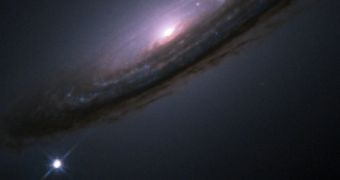For years, astrophysicists have been puzzling over a phenomenon they have encountered in space. The powerful explosions that occurred when massive stars reached the end of their burning cycle released powerful radio bursts, but some celestial fireballs did not display this behavior when they died. A new study finally figures out why this happens.
According to Australian investigators with the Center for All-sky Astrophysics (CAASTRO) at Curtin University, and the University of Sydney, only massive stars that go on to become neutron stars release radio bursts when they explode as supernovae. Stars that will collapse into a black hole do not exhibit a radio radiation afterglow, EurekAlert reports.
Both types of massive stars release one final, highly-energetic gamma-ray burst before they collapse, but some of these bursts feature a radio afterglow, while others do not. “In our research paper we argue that there must be two distinct types of gamma-ray burst, likely linked to differences in the magnetic field of the exploding star,” explains Curtin research fellow and lead researcher, Dr. Paul Hancock.
The team argues in a recent issue of the Astrophysical Journal that stars that collapse into neutron stars still have sufficient energy left to produce radio radiation. At the same time, stars that collapse into black holes put their entire remaining energy into their last GRB.

 14 DAY TRIAL //
14 DAY TRIAL //